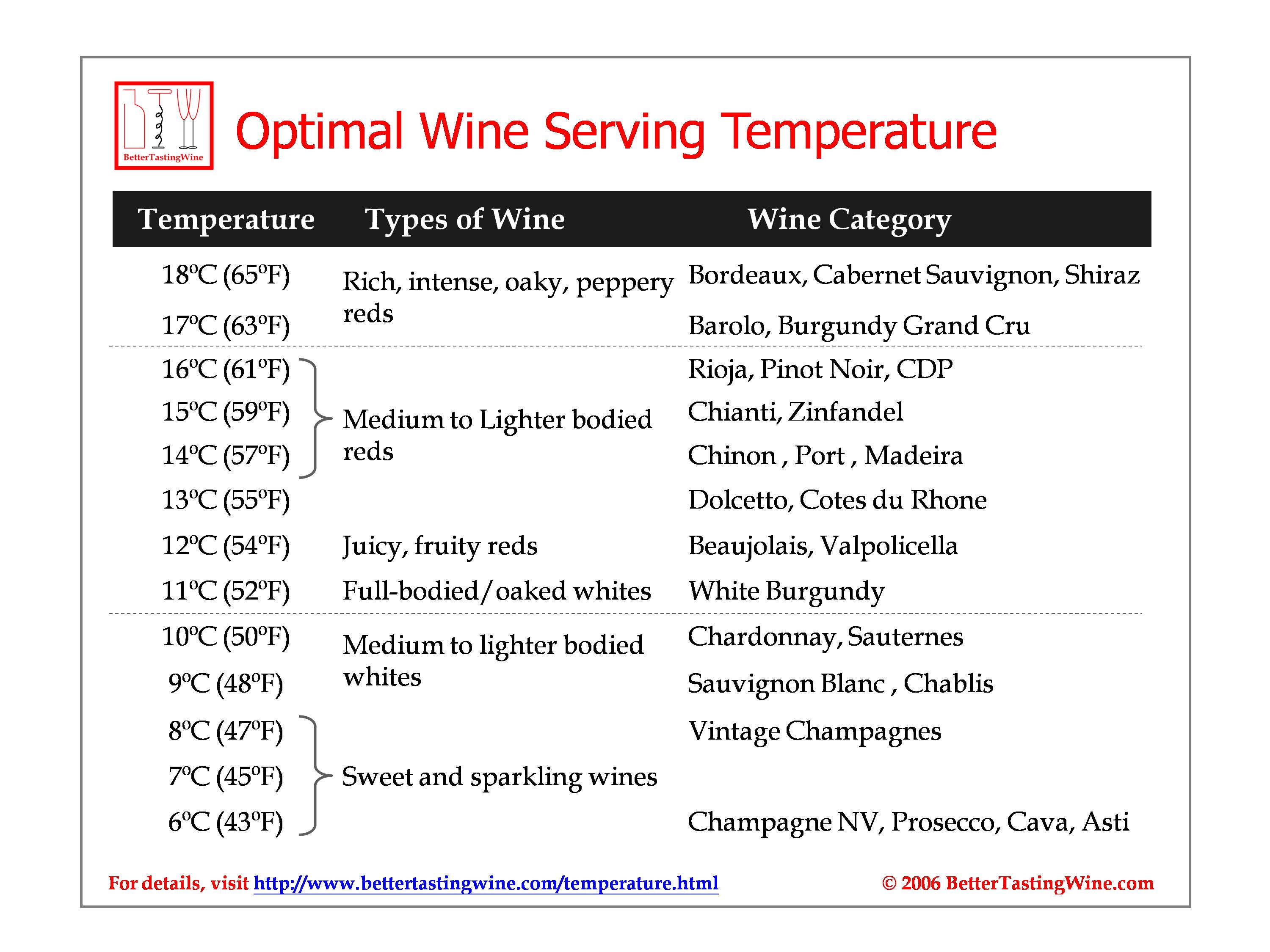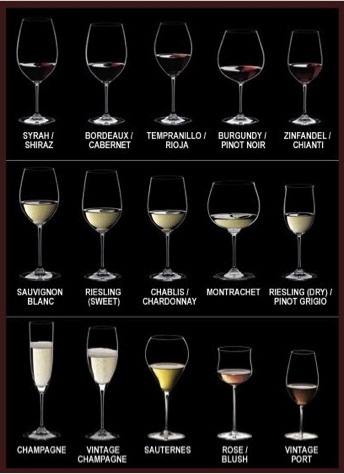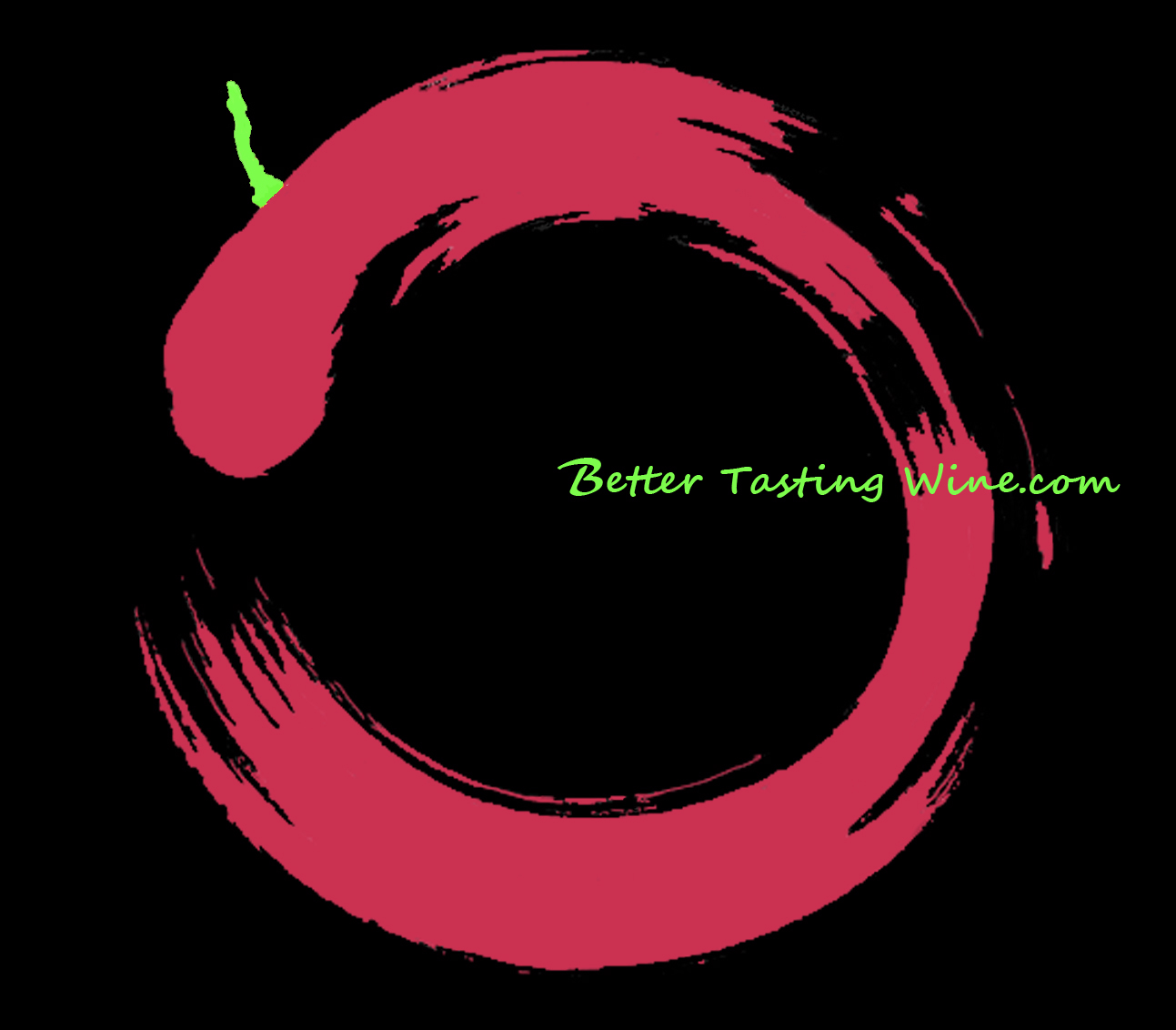How to Serve Wine
Lesson Objectives:
3 Simple ways to make your wine tastes better; Know what type of wine glass to use; Know when to decant using a glass decanter.
Three simple ways to make your wine taste better
Wine is volatile and has a life of its own. It reacts to temperature, air, and light. Serving wine properly can bring the best aroma and taste out of a wine:

(1) Serving it at the “optimal” temperature:
Though it is common wisdom that red wines are to be served at room temperature and white wines chilled, this will not give you the best wine tasting.
A bottle of wine opens up and releases its richest bouquet of aromas at a particular temperature. This particular temperature differs for each wine, depending on the grape variety and region. For example, a rich, intense Bordeaux could be served 2-3 degree below room temperature (~65°F); but a light, fruity red such as Beaujolais is best serve at least 10 degree (~54°F) below room temperature.
Serving Temperature does NOT equal storing temperature. When removed from the wine fridge (usually 50- 57°F or 10 and 14°C), a Champagne would requires further chilling. Wherease a Bordeaux would need some "sitting time" to reach its optimal serving temperature.
For optimal serving temperature for a specific wine / grape variety, visit wine temperature.
(2) “Properly” aerating and decanting the wine:
Though commonly used as synonym of each other, aerating and decanting serve two different purposes. Aerating is to breathe a bottle of wine by exposing it to air; whereas decanting is to filter sediment.
Aeration (airing or breathing):
By reducing the high carbon dioxide level often found in young wines, aeration can soften the tannins in young reds, making them more balanced and smoother. Aeration can immensely increase the pleasure of drinking a young Cabernet Sauvignon, Syrah, or Barolo.
The key to aeration is timing! A young, intense, tannic Bordeaux first growth may need up to 6 hours to open up. But a banquet red may become like vinegar if aerated for more than an hour.
Aerating methods:
Uncorking a bottle of wine and letting it sit for an hour is surely the worst way to aerate the wine. Not only can you not drink the wine for an hour, the method is ineffective. Even after many hours, the narrow bottleneck still prevents much air from opening up the wine.
Most wine lovers use a glass decanter and an aerating funnel. A decanter is a glass pitcher with a wide opening. The increased surface area allows faster aeration. The use of an aerating funnel will eliminate spilling and better aerate the wine in the pouring process.
There are many modern wine gadgets that accelerate the aeration of wine. For example, the use of an electronic aerator, where a battery-powered steel rod is inserted into the wine bottle, stirring and making the wine collide with air.
I tend to avoid these. The beauty of a wine is in its development journey. The best way to enjoy a wine is to keep sniffing and tasting it along the way. Enjoy it when it is closed, opening, and finally opened!
Aerating Tips: Wines with high tannin level require more aeration time. Use a special decanter (or avoid decanting) old and fragile wine.
It is important to know when NOT to aerate. Avoid aerating fragile, fully mature wines. Their aroma is volatile and many are best drunk within 30 minutes of serving. Aerating it would bring its "death" sooner than desired.
Decanting and sediment:
You may notice dark residuals in your glass or in the bottles. These are known as sediments. Sediments occur when a wine mature in the bottle. They are not bad for your health nor a sign of bad wine.
Sommelier decant sediment to enhance our drinking experience (so we won't have sediments in our mouth). The traditional way of decanting is to hold a candle in one hand and pour the wine into a decanter in a steady pouring motion. Stop pouring when sediment reaches the bottleneck.
Nowaday, decanting can be easily done with the help of an aerating funnel that comes with a filter. Pouring wine down the funnel not only aerates the wine but also removes undesired sediments – which is why aerating and decanting are becoming interchanging terms these days.
Decanting Tips: Leave a bottle upright for at least 24-36 hours in advance of serving.This will gather the sediment at the bottle of the bottle and allow an easy decanting. Depending on the vintage year and grape variety, for fully mature wines, 0.5-1 inch of the bottle may be sediments and best not poured.
 (3) Use complementary wine glasses:
(3) Use complementary wine glasses:
The first two steps change the nature of the wine, making it better. The third step enhances the way we conduct wine tasting, thus making it better.
Innovators like Claus Josef Riedel had spent years perfecting the shape and size of the wine glasses so that they can direct the wine to the right sensors on the tongue and funnel the aroma up to the nose.
Many wine lovers go all out with an extensive collection of wine glasses; there is a wine glass designed for every major type of wine (refer to picture on the left). If you don't want to spend a fortune on wine glasses, try the multi-purpose wine glasses that are designed to serve varietals.
Wine Glass Tips: When pouring wine into red glass, stop at the widest part of the glass. This will ensure the optimal aeration (with maximum surface area). In addition, you can swirl the wine without spilling it.Use bigger wine glasses for red wines; and smaller ones for white. For a complex vintage Champagne (e.g. Cristal, Selosse), try drinking it with a small white wine glass. You can better pick up its complex notes.
Don’t underestimate the power of serving temperature, aeration, and wine glass. They will greatly enhance your wine tasting experience by bringing the best aromas (and taste) out of the wines. Afterall as the experts say -- 90% of wine tasting come from smell!
Proceed to Lesson 4: Wine and Food Pairing
Stay informed. Follow us and subscribe here to get our latest wine insider news and tips:
Practical Wine Lessons: Wine Tasting Like a Pro | Grapes | Serving Wine | Food Pairing | Preservation | Temperature | Restaurant Ordering | Wine Labels | Wine Regions | Wine Storage | Start a Collection | Common Wine Myths.
Useful Wine Tips: Ten Facts to Become an Instant Wine Pro | Vintage Guide | Removing a Broken Cork | Serving Order of Wines | Fastest Way to Chill a Wine | Host Wine Party | Elements of a Good Wine | Wine Investment "Winning" Guide | Leftover Wine: Recipe for Vino Punch | Freeze Your Leftover Wine | Wine Moods Pairing | Best Way to Preserve Champagne After Open | Ten Must-Have Wine Accessories.
Tasting Tutorial: Cabernet vs. Merlot vs. Pinot Noir | Sauvignon Blanc vs. Chardonnay vs. Riesling | Burgundy vs US vs New Zealand Pinot Noir.
Fun Download: Wine Tasting Scorecard | Wine Serving Temperature Chart | Wine Aroma Table | 3 Must-Know Red Grapes | 3 Must-Know White Grapes | Vintage Chart | Wine Party Themes | Wine Region Maps | Grand Cru Chart | Wine and Moods Pairing Chart | Wine Quotes & Wine Humor.
Travel & Exploration: Champagne 101 | Bandol | Italy | Spain | Sherry.
Jewels & Gems: Grower Champagne Pierre Gimonnet | Gravner Ribolla - An Amber Wine Maturated in Clay | Gaja - King of Barbaresco.
